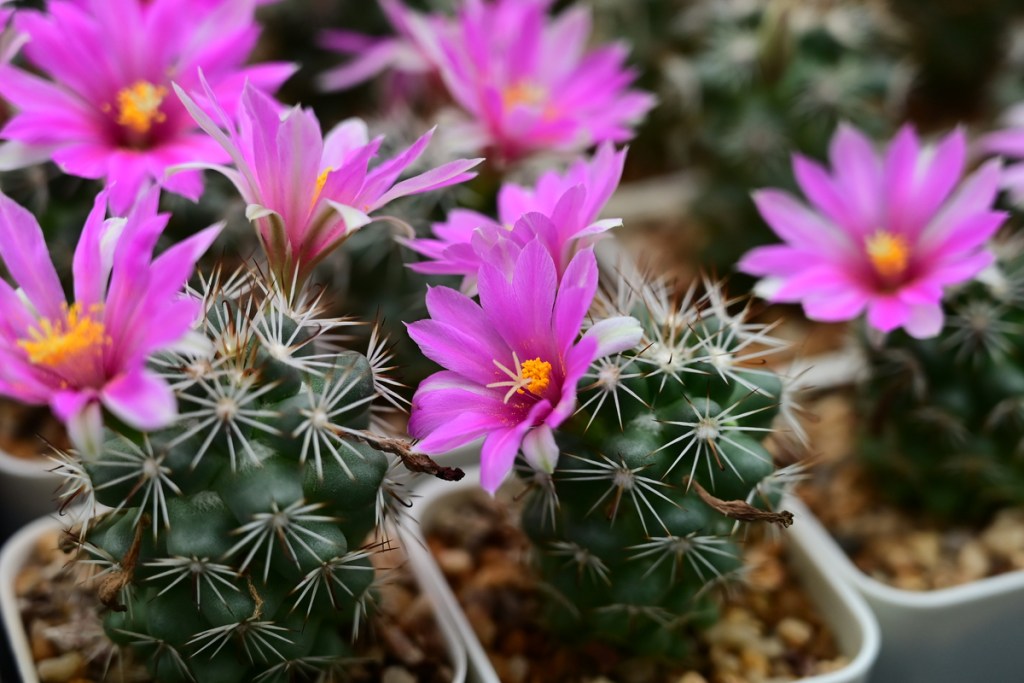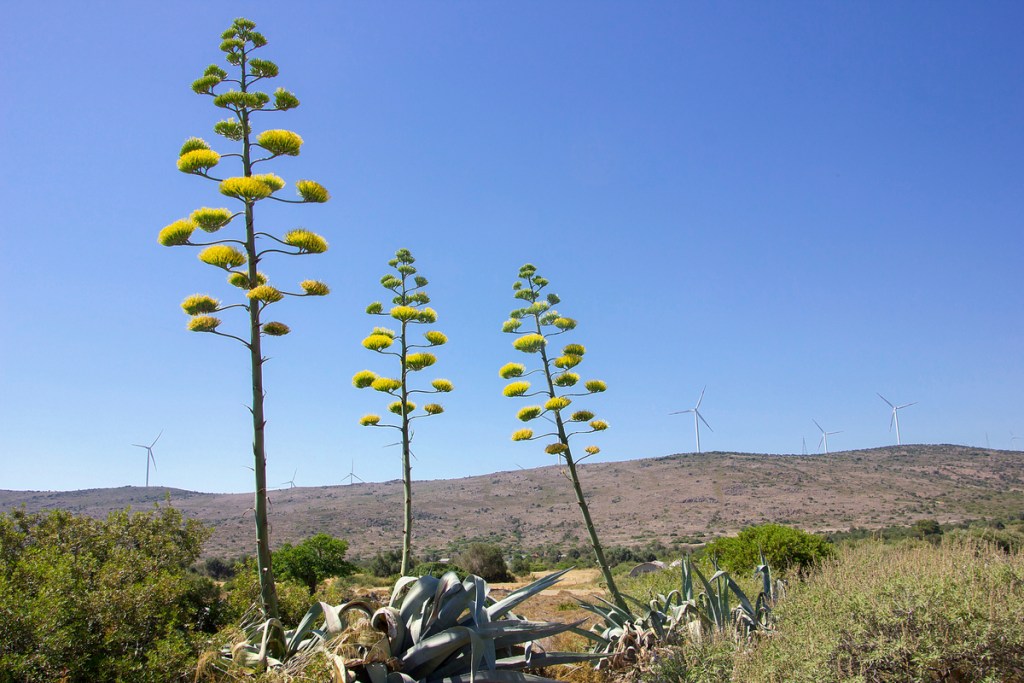Cacti can come across as prickly and uninviting, but some of them have flowers that rival the brightest blooms of more traditional flowers. If you want a flower garden bursting with color and life, but live in a dry, hot climate that makes growing most plants difficult, then you might have better luck with cacti. What’s more, cacti are also low maintenance, making them a great fit for gardeners on the go. Not sure when to expect cactus flowers, or which cactus might be the best fit for you? Don’t worry, we’ll set you up for success in this handy guide to cactus flowers.
What factors affect bloom time?
Species is one of the most important factors that can impact how often your cactus blooms and how long the bloom lasts. Cacti tend to bloom when they reach maturity, so slower growing cacti will typically take much longer to produce flowers than cacti that grow more quickly.
The other most important factor is whether or not all of your cacti’s needs are being met. A cactus that is getting the right amount of sun, water, and nutrition will bloom more regularly. On the other hand, a cactus that is getting enough light, water, and nutrition to stay alive, but not as much as it needs, won’t bloom as often. This is a way of conserving energy for the plant.
Knowing what type of cactus you have is essential for predicting bloom time. This is both because different cacti bloom at different rates and because different cacti have different needs. Although we like to think of cacti as plants that all need hot, dry, sunny conditions, there’s actually still quite a bit of variety when it comes to how much of each of those things individual cactus species need.

The best cacti to grow for flowers
One of the best cacti to grow for flowers is the Christmas cactus, also known as the genus Schlumberga. They produce flowers in various shades of pink, depending on the specific variety you have, and bloom regularly. They tend to bloom when the weather gets colder, which is where the name Christmas cactus comes from. Additionally, they’re low maintenance and don’t grow spines, making them a safer alternative if you have children or pets. If you start from seed or from a seedling, it can take two to three years for a Christmas cactus to mature enough to bloom. Once they begin blooming, and with proper care, they bloom regularly every year.
For a more traditional looking cactus, try something from the Mammillaria genus. Also called pincushion cacti, these small, rounded cacti begin to bloom in late spring and early summer. Their flowers come in many shades of pink, red, orange, and white. Although they stay fairly small, they can take over a year to mature and the flowers last only about a week. However, they bloom fairly regularly once they begin and the flowers are known for being vibrant.
What cacti take the longest to bloom?
If you’re looking for cacti that bloom quickly and often, then you should probably avoid saguaros, agave americana, and agave ocahui. All three cacti take decades to mature enough to produce flowers. Both agave americana and agave ocahui take 20 to 30 years to bloom; once they do, though, their flowers are incredible. Like all agaves, they produce tall stalks on which the flowers bloom, but the stalks of these varieties tower over their surroundings. However, they only bloom once, as agave typically die after producing flowers due to the amount of energy they take to grow.
Saguaros take between 30 and 50 years to flower, and the blooms last for only a day. This makes the flowers a rare sight. The flowers are large, with white petals and a center filled with yellow pollen. Once the flowers have been pollinated, the cactus then produces red fruit which, when ripe, split open. The split fruits often look like red flowers. The saguaro’s fruit is edible to humans, but, considering how tall saguaros can grow, it can be tricky to reach them.

How can you encourage your cactus to bloom?
The best way to encourage your cactus to bloom is to take good care of it and be patient. If you’ve noticed that your cactus is at the age when cacti in its genus should be blooming but hasn’t started to flower yet, double check that it’s getting everything it needs. For indoor cacti, the most common reason blooming is delayed is not enough sun. Try moving your cactus to a sunnier location, or consider investing in a grow light.
How often does a cactus flower bloom? It depends on the cactus! Most cacti that are commonly kept as houseplants take between one and 10 years to bloom, but some can take up to 50 years before they start to flower. Some cacti, like most agaves, only bloom once in a lifetime, while others, such as Christmas cacti, bloom every year. This wide range of flowering times can be overwhelming, but it also means that there are plenty of options, so you can choose the cactus that works best for you.
Editors' Recommendations
- Stunning Monstera plants that you should add to your indoor plant collection
- Beautiful, low-maintenance pothos varieties to add to your plant collection
- Your guide to rubber plant care and the best varieties to add to your home
- Are these common houseplants safe for your cat? Read this guide to find out the scoop
- These are the most popular indoor plants of 2023 – add one or all to your collection




